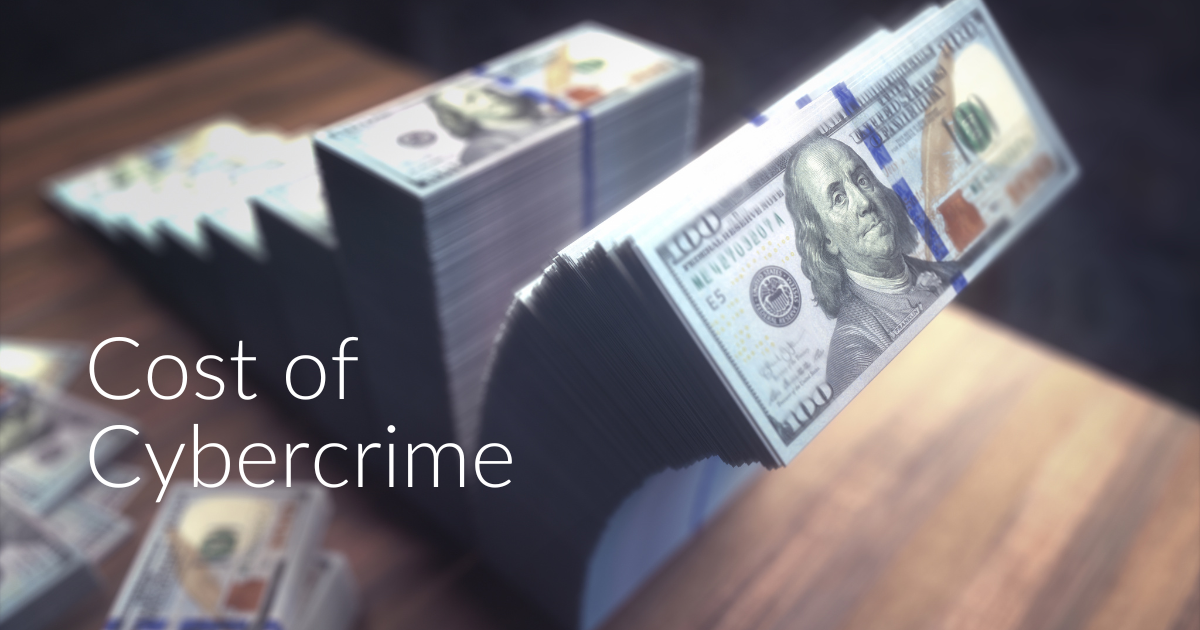- Climate change impacts IT industry and data centres
- Reliable password management requires more than just a good tool.
Cost of cybercrime

It's no secret that cyber incidents cause devastating losses to their victims. We have compiled global statistics on this topic for you.
It's hard to believe, but research suggests that by 2022, 6 billion people will be connected to the internet and interacting with data in some way. This is a full 1 billion more than in 2020. And by 2030, it is predicted that there will be 7.5 billion internet users.
People, business and organisations buy goods, make payments online, and store digital copies of valuable and sensitive data in the cloud. And, of course, this gold mine attracts the attention of many malicious actors.
In this article, we have compiled the latest statistics on cybercrime and the losses it causes.
World statistics and prospects
About 80% of breached organisations report that they have been breached more than once. More than half of companies and organisations are attacked yearly, and it’s not surprising that a lot of attacks reach their goals.
The total global annual cost of cybercrime is predicted to reach $8 trillion in 2023, which is 9 times exceeds the GDP of Switzerland. It’s about $255,000 lost per second! In 2021, the global cost of cybercrime was $6 trillion, double the 2015 amount of $3 trillion.
Cybercrime Total costs | USD | CHF (approximately) |
2023 | 8 trillion | 7.3 trillion |
Loss/sec. | 255,000 | 233,000 |
2021 | 6 trillion | 5.48 trillion |
2015 | 3 trillion | 2.74 trillion |
A fast-growing branch of cybercrime is ransomware, with a year-on-year growth rate of around 30%. Global ransomware losses reached $8 billion in 2018, $11.5 billion in 2019 and $20 billion in 2021. By 2031, ransomware will cost its victims around $265 billion annually.
For comparison, we can take the market capitalisation of Swiss companies such as Swatch with the capitalisation of $13.25 billion or Nestlé with $304.57 billion.
Ransomware losses | USD | CHF (approximately) |
2018 | 8 billion | 7.3 billion |
2019 | 11.5 billion | 10.51 billion |
Swatch cap. | 13.25 billion | 12.11 billion |
2021 | 20 billion | 18.28 billion |
2031 | 265 billion | 242.18 billion |
Nestlé cap. | 304.57 billion | 278.34 billion |
Cost of a data breach
The global average total cost of a data breach reached $4.35 million in 2022. The global cost per record of a data breach was $164, which illustrates the cost of forensic investigations, communications, and loss of turnover. Of course, this indicator is an average, while the range of costs incurred per breached record can be considerably wide, depending on the industry, data sensitivity, number of records breached, etc.
The highest cost of a data breach is in the USA ($9.44 million).
European countries with breach costs above the global average include the UK ($5.05 million) and Germany ($4.85 million).
The average cost of a ransomware attack, excluding the cost of the ransom itself, was $4.54 million, but the we should take into account that the average ransom demand in Q2 2023 was $740,000 (for comparison, the median ransom payment was $190,000).
The most costly incidents occurred in the healthcare sector ($10.1 million). This was followed by the financial sector ($5.97 million). The pharmaceutical, technology, energy, services, and industrial sectors are also skating on thin ice.
In 2022 it took an average of 207 days to identify a breach and 70 days to contain it. In fact, the longer the breach lifecycle, the more costly the breach is likely to be.
Costs of a data breach | USD | CHF (approximately) |
Germany | 4.85 million | 4.44 million |
Healthcate | 10.1 million | 9.25 million |
The most vulnerable sectors
Along with the ransomware attacks, cybercrime involving cryptocurrencies is starting to draw more and more attention.
Global losses from crypto- cybercrimes amounted to $17.5 billion in 2021, and were expected to grow by 15% per year to reach $30 billion by 2025.
Hospitals and infrastructure, including electricity, gas and water utilities, are the most susceptible to fall victim to a cyber attack. Banking, telecommunications, technology, chemicals, energy and transportation services also face high cyber risks.
Small and medium-sized enterprises are targeted by cybercrime more than half the time. However, due to their lower resilience to cyber attacks, more than half of those attacked tend to go out of business.
Crypto- cybercrime losses | USD | CHF (approximately) |
2021 | 17.5 billion | 16.02 billion |
2025 | 30 billion | 27.47 billion |
Cybercrime is no longer a niche or marginal activity; it is now an industry in its own right. The global cost of cybercrime is in the trillions. The number of attacks, as well as the cost of these attacks, are only growing every year. It's a never-ending arms race.
Improving cybersecurity should therefore be as natural a direction of development for modern companies and organisations as improving their products and services.
Of course, not every company is able to organise an effective cybersecurity system from A to Z. In such situations, it is wise to turn to experts who will help with advice and action. Feel free to contact us regarding cybersecurity and compliance issues – our experts are here to help!
Sources:
https://www.esentire.com/resources/library/2022-official-cybercrime-report
Cost of a Data Breach Report 2022 by Ponemon Institute and IBM Security
https://www.getastra.com/blog/security-audit/cyber-crime-statistics/
https://en.wikipedia.org/wiki/List_of_countries_by_GDP_(nominal)
https://companiesmarketcap.com/switzerland/largest-companies-in-switzerland-by-market-cap/
https://www.statista.com/statistics/1307426/number-of-data-breaches-worldwide/